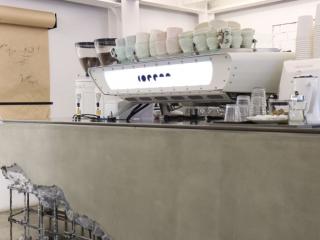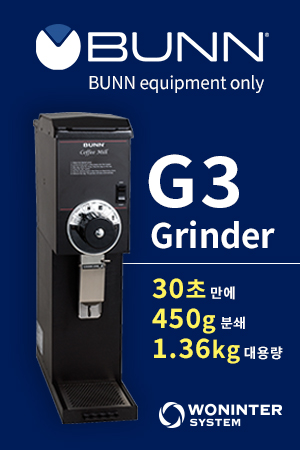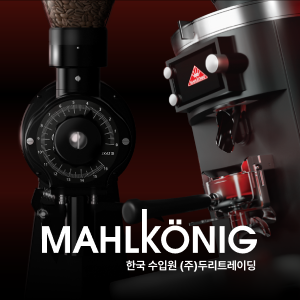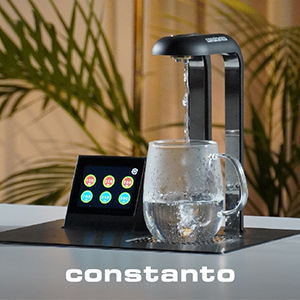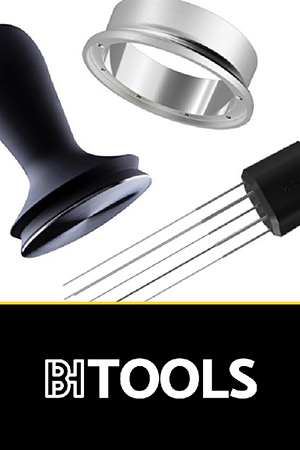팁 테크닉
The Tamp or No Tamp Discussion
An interesting topic has come up with growing frequency on espresso forums that I find very interesting. Is tamping the espresso grounds into the portafiter really necessary? Some people have proposed that tamping is not needed. The reason being that 9 bars of pressure is certainly more than anyone ever tamps by hand. A simple 30 pound tamp is no match for the powerful 9 bars (126 pounds per square inch, give or take) delivered by a good espresso machine. Seems simple enough. You can just let the pump do the tamping for you, right? However, at the same time, I find this discussion a little annoying. The annoyance comes from the basic flaw in logic of the premise of the debate, if it can even be considered a debate. I don’t think it is a real debate based on the fact that I don’t think anyone out there is really pulling shots without tamping. The flaw that I find disturbing about this line of reasoning is the good old mixture of apples and oranges. The Tamp/No Tamp issue, to me, sounds a lot like saying,
“You should eat an apple every day, because oranges are so full of vitamin C, and you body needs lots of vitamin C”
I do not believe that the pump pressure delivered by the espresso machine is any substitute at all for the force applied by tamping the ground coffee. The reason is because the tamping pressure of your arm is a directional force, and the pump pressure creates an artificial atmosphere pressure inside the portafiter. Let’s look at these two kinds of pressure.

Atmospheric pressure is the force that our air exerts because it is carrying the weight of all the other air on top of it. As the upper layers of air squeeze in on our layer of air, everything in our layer becomes squeezed also. So if you fill a balloon to the brink of explosion while standing at the top of a mountain, what will happen if you bring it down to sea level? The balloon will shrink as the thicker layer of upper air squeezes in on it. Likewise, a balloon filled at sea level will pop if you try to take it up the mountain.
When you tamp you espresso, you press down with what is called foot-pounds. You apply a force in a particular direction. This action moves the particles of coffee closer to one another, displacing the air that is trapped between the particles of you fluffy coffee grinds. You can push a car up a slight incline by applying enough foot-pounds in the direction of the incline. But if you increase the atmospheric pressure around the car, it will not move up the hill.

The purpose of tamping is to get the air space out the coffee grounds, and hopefully to create an even thickness of coffee with an even density throughout. If you do not tamp, the pump pressure will raise the atmospheric pressure inside the portafiter to something near 9 bars, but that will not remove space between the fluffy grinds, it will simply push water into that space. If you have uneven density when the grounds are dry, you will have uneven density when they are wet. This causes uneven extraction, which in turn, causes bitterness and bad after taste in espresso. Perhaps you have one of those grinders that creates a near perfect distribution of even density coffee in the portafiter. How nice for you, (no seriously, that is nice for you), but that is a whole nuther topic.
Another factor that I have heard brought into this subject, inevitably, is the expansion of the coffee in the portafiter. The case is sometimes made that the expansion of the coffee in hot water provides the force needed to “seal off” the puck in the portafiter. If the puck is swelling, the theory goes, and the compartment inside the portafiter is now relatively smaller than it was when the coffee was dry, doesn’t that give you the squeeze on the puck to remove space between the fluffy grounds? If we refer to Illy’s glass portafiter tests we find that the puck actually shrinks under pump pressure. This is for the same reason that the balloon shrinks when you take it down the mountain. Let’s look at two kinds of coffee expansion.
-Gaseous expansion
When you make a pour over with fresh coffee you may have noticed that the grounds seems to almost double in size when hot water is added. This is mostly caused by the sudden release of lots of CO2 bubbles. In the portafiter environment, however, this gas is not allowed to bubble outwardly, and becomes dissolved in the liquid coffee to be release later as the foamy cream, so no puck expansion there.

-Expansion by absorption
There is a physical growth of each individual coffee particle due to fact that coffee is porous. The cell structure of the bean is such that the coffee can absorb water into each cell, thereby expanding a tiny bit as the water takes up a little space, and the cell walls soften and become flexible. If you have ever done any fine woodworking, you know you have to compensate in many ways for the fact that wood will always swell in humidity and shrink when it gets dry. Don’t you have a drawer at home that is always sticking in the summer, but opens more easily in the winter? Well, again, according to the Illy experiment with transparent portafiters, the coffee is not allowed to swell until the pump is turned off. So, no expansion there either.

So the conclusion that I have drawn is: the physical compaction that we induce by tamping to increase our chances of creating even extraction is something that we can only get from physically tamping with a tamper, and a push from either a mechanical device or one’s arm. The pump pressure provides an entirely different kind of pressure that serves it’s own purpose, but it is no substitute for tamping.
-
PREVIOUS
Roughly Pressure Profiling



